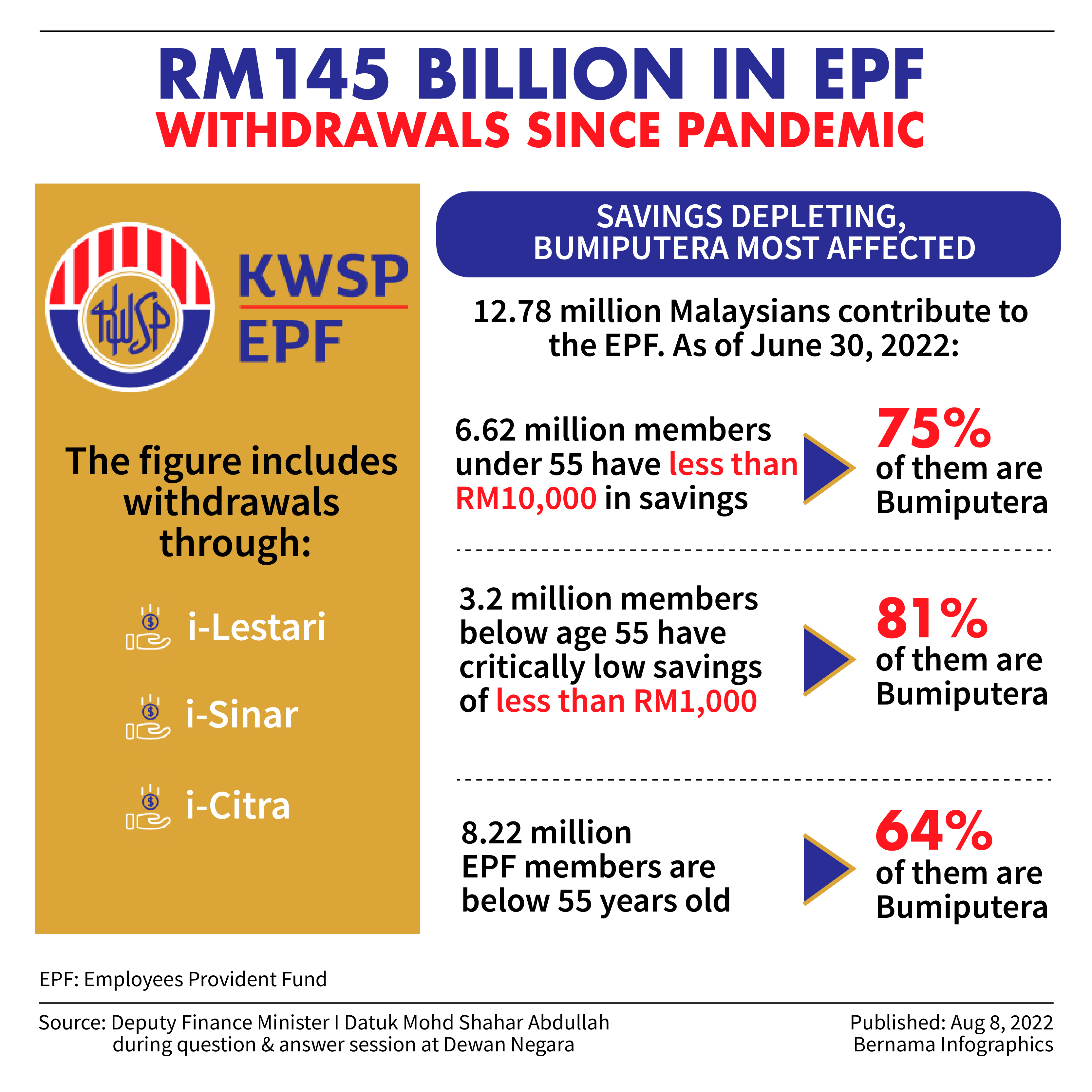.jpg&w=1920&q=75)
KUALA LUMPUR (Aug 8): The level of savings of Employees Provident Fund (EPF) members is low and very worrying, especially after the implementation of four withdrawal facilities which saw a RM145 billion withdrawn by members, said Deputy Finance Minister I Datuk Mohd Shahar Abdullah.
The four withdrawal programmes that took place due to the Covid-19 pandemic are i-Lestari, i-Sinar, i-Citra, as well as the special one-off withdrawal of RM10,000.
Speaking in Parliament on Monday (Aug 8), Mohd Shahar said this is in addition to the reduction in the employee share statutory contribution rate for a period of 27 months from April 2020 to June 2022.
“Overall, the impact of these programmes related to Covid-19 on members' savings is estimated at RM155 billion, which consists of RM145 billion withdrawn by members under the four withdrawal programmes, and almost RM10 billion from the impact of the employee share statutory contribution rate reduction programme,” he said in the Dewan Negara.
Mohd Shahar was responding to a question by Senator Datuk Razali Idris, who wanted to know measures to save EPF members with savings of less than RM10,000, with 55% of them being Bumiputeras and, even more worryingly, 79% of EPF members with savings of less than RM1,000 are also Bumiputeras.
According to the Paya Besar Member of Parliament, as of June 30, a total of 6.62 million members or 52% of the total of 12.78 million EPF members aged under 55 had savings of less than RM10,000. Of that number, 4.99 million members or 75% were Bumiputera members.
At the same time, there were 3.2 million members under the age of 55, who were at a very critical savings level of less than RM1,000, of which 2.58 million members or 81% of them were Bumiputera members.
“As a relative comparison, the number of Bumiputera members of 8.22 million people is 64% of the total of 12.78 million EPF members under the age of 55.
“This shows that most Bumiputera members are concentrated among members who have a low level of EPF savings compared to other races,” he said.
In an effort to help members increase and rebuild their retirement savings, Mohd Shahar noted that the EPF provides various channels to make it easier for members to contribute to the EPF itself.
“For members who are employed and have an employer, they can choose to contribute beyond the employee share statutory contribution rate of 11% at any time. In addition, they can also contribute [to the EPF] themselves at any time, subject to a maximum amount of RM60,000 per year,” he said.
For members who are self-employed, who have no fixed income or are outside the labour force, such as students and housewives under the age of 60, Mohd Shahar said they can also choose to contribute to the EPF voluntarily at any time, according to their ability under the i-Saraan programme, up to RM60,000 per year.
“As an incentive to encourage this group to save under i-Saraan, the Government provides a contribution of 15% of the total contribution, or up to RM250 per year,” he added.
As for housewives who are under 55 years of age and registered under the eKasih database, Mohd Shahar said they or their husbands can also contribute to the EPF voluntarily under Program Kasih Suri Keluarga Malaysia (previously known as the i-Suri programme), which was introduced to encourage women from low-income households to save for their old age.
Under this programme, members who contribute at least RM5 per month or RM60 per year are eligible to receive an incentive from the Government of RM40 per month or RM480 per year into their EPF accounts.
Mohd Shahar also said that the EPF had continued to emphasise the importance of awareness and knowledge of financial planning in balancing financial needs for today and retirement in the future.
For more Parliament stories, click here.
